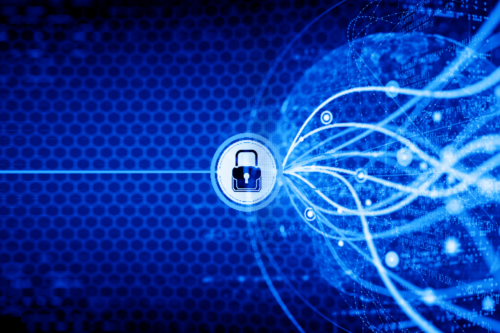Cybersecurity 101 Categories
How do you setup passwordless SSH?
Setting up passwordless SSH involves a few key steps. Here’s a general guide:
- Generate a Key Pair on Your Local Machine:
- Open a terminal or command prompt.
- Run the command
ssh-keygento generate a new SSH key pair. You’ll be prompted to provide a file path to save the key. Press Enter to use the default location. - You’ll be asked to enter a passphrase. For passwordless login, you can leave this blank and press Enter.
- Copy the Public Key to the Remote Server:
- Use the
ssh-copy-idcommand to copy your public key to the remote server. Replaceusernamewith your username on the remote server andremote_hostwith the server’s address. (ssh-copy-id username@remote_host)ssh-copy-id username@remote_host
- If
ssh-copy-idis not available, you can manually copy the key. Display your public key withcat ~/.ssh/id_rsa.pub(or the path you saved your key to). Copy the output. - Log into the remote server with
ssh username@remote_host. - Paste the key into
~/.ssh/authorized_keyson the remote server. Create the.sshdirectory and theauthorized_keysfile if they don’t exist.
- Use the
- Log in to the Remote Server Without a Password:
- Now, try logging into the server with
ssh username@remote_host. If everything is set up correctly, you should be able to log in without entering a password.
- Now, try logging into the server with
- Troubleshooting:
- If it’s not working, check the permissions of the
.sshdirectory and theauthorized_keysfile on the remote server. The.sshdirectory should be700(drwx------), andauthorized_keysshould be600(-rw-------). - Ensure that the SSH server configuration file (
/etc/ssh/sshd_configon most systems) on the remote server allows key-based authentication.
- If it’s not working, check the permissions of the
Remember, while passwordless SSH is convenient, it’s important to secure your keys. If your private key is compromised, anyone can access your servers. Consider using a passphrase for added security and use an SSH agent to manage keys in memory while your session is active.
Why should a company setup passwordless SSH?
Setting up passwordless SSH can offer several advantages for a company, enhancing both security and efficiency in managing remote access to servers. Here are some key reasons why a company might choose to implement passwordless SSH:
- Improved Security:
- Reduced Risk of Password Attacks: Password-based logins are vulnerable to brute-force and guessing attacks. SSH keys are much more secure and practically immune to these types of attacks.
- Unique Keys for Users: Each user or service can have a unique SSH key, making it easier to track and manage access.
- No Password Reuse: Users often reuse passwords, which can be a significant security risk. SSH keys eliminate this issue.
- Enhanced Operational Efficiency:
- Automated Processes: Passwordless SSH allows for automated scripts and processes (like backups, deployment, or remote administration tasks) to run without manual password entry, increasing efficiency.
- Easy to Manage at Scale: Managing keys is often easier than managing passwords, especially when dealing with a large number of servers and users.
- Audit and Compliance:
- Better Tracking and Auditing: SSH keys can be uniquely associated with individual users, making it easier to audit who accessed what and when.
- Compliance Requirements: Many regulatory frameworks recommend or require the use of key-based authentication for secure access to systems.
- User Convenience:
- No Need to Remember Passwords: Users do not need to remember complex passwords or change them regularly.
- Single Sign-On (SSO) Capabilities: SSH keys can be integrated into SSO systems, simplifying user access across multiple systems.
- Reduced Administrative Burden:
- Less Need for Password Resets: Password resets are a common administrative task that can consume significant resources. SSH keys eliminate this need.
- Centralized Key Management: SSH keys can be managed centrally, making it easier to revoke access when necessary (e.g., when an employee leaves the company).
- Enhanced Flexibility and Compatibility:
- Works Across Different Platforms: SSH is a standard protocol supported by many operating systems and platforms.
- Support for Advanced Authentication Methods: SSH keys can be combined with other forms of authentication for multi-factor authentication (MFA), enhancing security further.
While passwordless SSH offers these advantages, it’s important to implement it carefully. Key management should be handled securely, with regular audits and compliance checks to ensure that unauthorized keys are not in use, and that keys are revoked when no longer needed. Additionally, companies should educate their staff about protecting their private keys, just as they would with passwords.
What should company know before they setup passwordless SSH?
Before a company sets up passwordless SSH, there are several important considerations to take into account. These considerations ensure that the deployment is secure, efficient, and aligns with the company’s IT infrastructure and policies.
- Understand SSH Key Management:
- SSH keys, especially private keys, must be managed and stored securely. Companies should have a system in place for issuing, renewing, and revoking keys.
- It’s crucial to have a policy for handling lost keys or compromised keys and for rotating keys periodically.
- Security Implications:
- While SSH keys are more secure than passwords, they can still be vulnerable if not managed properly. Educate employees on the importance of keeping their private keys secure.
- Implement measures to prevent unauthorized copying or usage of private keys.
- Consider using passphrase-protected SSH keys for additional security.
- User and Access Management:
- Determine which users need SSH access and what level of access they require.
- Establish procedures for granting and revoking SSH access. This includes regularly auditing SSH keys and access rights.
- Automation and Integration:
- Passwordless SSH can facilitate automation for various tasks like backups, system updates, and deployment processes.
- Ensure that your existing tools and scripts are compatible with SSH key-based authentication.
- Backup and Recovery:
- Have a backup and recovery plan for the SSH keys. Losing access to the keys can lead to significant operational issues.
- Compliance and Audit Requirements:
- Ensure that your passwordless SSH setup complies with relevant industry standards and regulations.
- Maintain logs and records for audit trails, which is critical for tracing activities in case of any security incidents.
- Infrastructure and Compatibility:
- Ensure that all systems and servers in your network support SSH key authentication.
- Consider the impact on legacy systems and how they will be integrated into this new approach.
- Training and Support:
- Provide training for IT staff and end-users on how to use SSH keys.
- Establish support protocols for issues related to SSH access.
- Multi-Factor Authentication (MFA):
- For enhanced security, consider implementing MFA in conjunction with SSH keys.
- Plan for Scalability:
- Ensure that the SSH key management solution is scalable and can handle the growth in users and infrastructure.
By carefully considering these factors, a company can ensure a secure and efficient deployment of passwordless SSH, which not only enhances security but also streamlines operations.
What are some challenges with setting up passwordless SSH?
Setting up passwordless SSH, while beneficial for security and efficiency, does come with its own set of challenges. Here are some common issues that companies might face:
- Key Management and Distribution:
- Managing SSH keys can be complex, especially in large organizations with many users and systems. Distributing keys securely and ensuring they are updated or revoked when necessary can be a significant challenge.
- Lost or forgotten keys can be a problem, especially if there are no clear procedures for key recovery or regeneration.
- Security of Private Keys:
- Ensuring the security of private keys is crucial. If a private key is compromised, it can give an attacker access to critical systems. Educating users about securing their private keys and implementing enforced policies can be challenging.
- There’s also the risk of users sharing keys, which can lead to unauthorized access.
- Integration with Existing Systems:
- Integrating passwordless SSH with existing systems and infrastructure may require significant effort, especially if those systems are older or not designed with SSH key authentication in mind.
- User Training and Adaptation:
- Users accustomed to password authentication may need training and time to adapt to a key-based system.
- There might be resistance to change, and some users may find managing SSH keys more complex than using passwords.
- Automated Processes and Scripts:
- Updating automated processes and scripts to work with key-based authentication can be time-consuming. This is especially true if there are a lot of legacy systems or scripts in use.
- Audit and Compliance:
- Maintaining an audit trail and ensuring compliance with internal policies and external regulations can be more complex with SSH keys.
- Implementing and managing logging and monitoring systems for SSH access requires additional resources and planning.
- Disaster Recovery:
- Establishing a disaster recovery plan that includes SSH key backups and restoration procedures is crucial but can be overlooked.
- There must be a balance between security and accessibility in backup strategies to prevent lockout scenarios.
- Scaling and Performance:
- As the organization grows, scaling the SSH key management system can become a challenge. Ensuring that the system performs well under increased load requires foresight and planning.
- Multi-Factor Authentication (MFA):
- Implementing additional layers of security like MFA with SSH keys can add complexity. This might require additional infrastructure and user training.
- Policy Enforcement:
- Enforcing policies regarding key generation, strength, rotation, and usage can be difficult, especially in decentralized environments.
Addressing these challenges requires careful planning, the right tools, and often a cultural shift in how security and access are perceived and managed within the organization.



